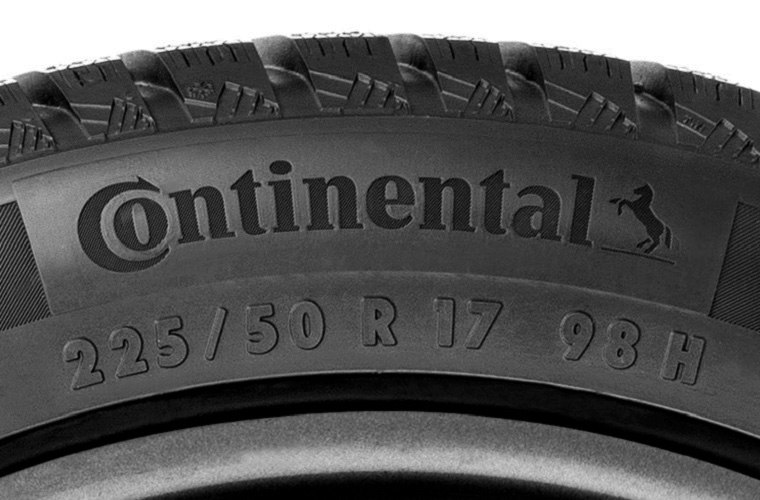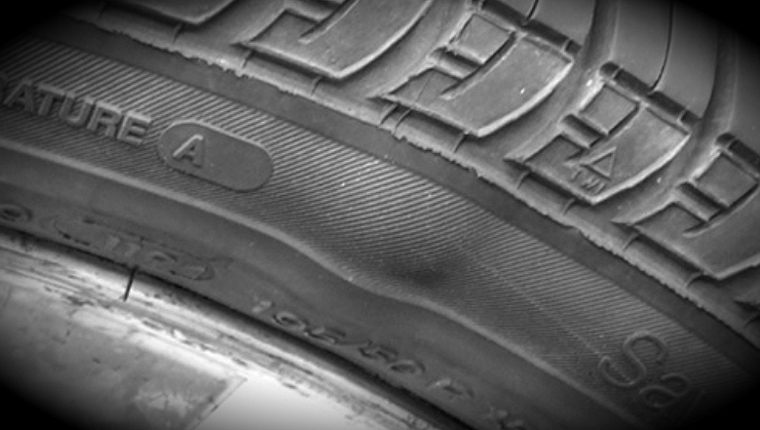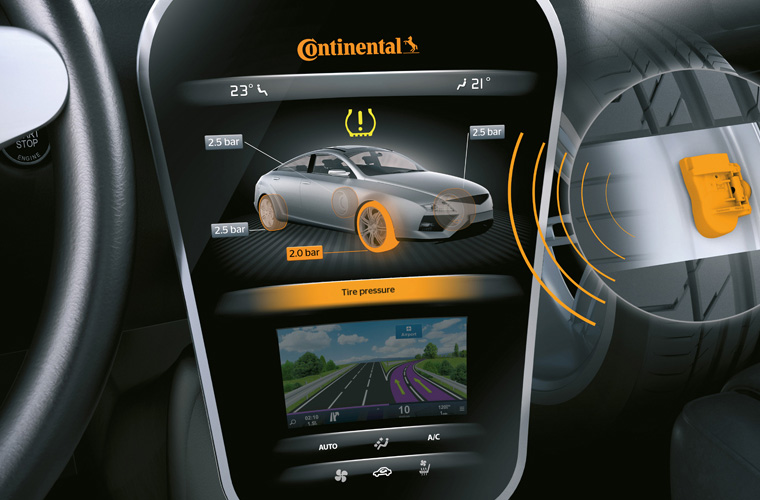Did you know that a staggering 11% of all MOT test fails in the UK are due to faulty tyres? According to the latest Driver and Vehicle Standards Agency (DVSA) figures, tyre failure is the third most common reason for MOT fails, behind faulty brakes, and lighting & signalling.
So what are the reasons for MOT tyre fails, and how can you avoid this happening to you?

Worn tyre treads lead to MOT failure
Of the 11% of MOT failures caused by faulty tyres, the number one issue is illegal, worn-down tyre treads. Invented by Continental Tyres in 1904, your treads are the grooves in the rubber that are essential for removing water from the “contact patch” between the tyre and the road. Without this, there would be no traction to grip the road. Grip allows you to brake, steer and accelerate safely and reliably. It’s no wonder tyres are such an important part of the MOT.
If your tyre treads are too worn they become dangerous. It’s for this reason that there’s a legal minimum tyre tread depth of 1.6mm in the UK. Anything less is illegal.

How to best avoid tyre tread wear fails
Regular inspection is vital. Look out for shallow treads. A tell-tale sign is a shiny tyre surface. If you see this on your tyres it’s time to think about a new set. You can confirm whether your treads are legal by placing a 20p coin inside the treads, along different points across the tyre’s width. If at any point you can see any of the coin’s outer rim, it’s not just time to think about a new set of tyres, it’s time to act. Your tyres are not only illegal, they’re very dangerous.
Prolonging the life of your tyres
Maintain the right tyre pressures
If your vehicle’s tyres are inflated at the correct level they will wear down evenly, and they’ll be not only safer but more fuel efficient too.
Don’t waste money on part-worn tyres
UK Council Trading Standards teams up and down the country report that part-worn tyres are being sold with questionable repairs and inaccurate labelling. Because they’re second hand, the best of the tyre’s tread has already worn down, so they’re not only unsafe but a false economy too.
All tyres eventually wear down
Even if they’re correctly inflated, all tyres will wear down gradually over time. It’s all about managing this process, ensuring your tyres are as safe as they can be. With their superior compounds, premium tyres – like those from leading tyre manufacturer, Continental – will wear down slower than cheaper tyres with inferior compounds.
Tyre wall bulges and cuts
Good, safe sidewalls are essential for driver safety. They’re the part of your tyre that absorbs pressure, and are vital to ensure your car remains stable. Again, as with tyre treads, regular inspection is to be encouraged. If you notice a bulge in the sidewall, or nicks, tears or bubbles, it’s usually a sign of serious tyre damage. For your driver safety – as well as that of other motorists – it’s very important that you to get any damage checked by an expert right away. And if an inspector spots sidewall damage during your MOT, it’ll be an immediate fail, without exception.



Avoid sidewall damage – five top tips
Avoid scuffing your tyres against kerbs
A very typical example that leads to sidewall damage. A rough bang against a kerb or pavement is best avoided. If you’re in the habit of regularly scuffing your tyres when, for instance, parking, the integrity of the tyre sidewall will eventually be compromised, leading to long-term problems.
Potholes – avoid them at all costs
Heavy thumps, bangs and scrapes due to encountering potholes can seriously damage your tyres. Potholes seem to be everywhere these days, so be extra vigilent and avoid them if you can.
Maintain the right tyre pressures
The tyre sidewall is exposed to even more significant pressures when they’re insufficiently filled with air. The same is true if you have too much air in your tyres. Why? Because they have to compensate for under and over-inflated tyres to keep your vehicle stable. Ultimately, incorrectly inflated tyres can cause premature wear to your tyre’s sidewall.
A clean tyre is better than a dirty tyre
If you’ve had the misfortune to either spill petrol on your tyres, or to have driven through some really dirty, oily water, it’s essential that you clean off whatever’s left on the tyres with water and washing up liquid as soon as possible. Again, regular tyre inspection will help you to spot any exposure to solvents and oils. If left unattended, these chemicals will ultimately soften your tyre compounds, and will most likely compromise the strength of the tyre sidewall.
Keep a sharp lookout for sharp objects
You won’t be surprised to learn (if you didn’t realise already) that MOT inspectors are on the lookout for tyre damage caused by debris, particularly sharp objects. The reason is obvious: if cuts, tears and nicks are left to linger within the tyre sidewall (or any other part of the tyre for that matter) they will in all likelihood result in lasting damage, such as punctures and sidewall failures. Once again, this can be best avoided through regular tyre inspections, because the sooner you can spot and prise debris out of your tyre, the less chance of it causing any lasting damage.

Faulty Tyre Pressure Monitoring System (TPMS)
Your TPMS uses sensors embeded in the tyres to measure their pressure. TPMS is a relatively automotive technology, designed to make identifying tyre pressure issues easier for motorists. But, like all technology, TPMS needs to be correctly maintained, and if neglected can fail. Obvious, right? Yes, but unfortunately what many drivers aren’t aware of is that these systems are also inspected as part of the MOT and – if found faulty – will result in test failure. To avoid an MOT fail, make sure you get your TPMS checked when you get your vehicle serviced, and whenever you change your tyres.

Ask an expert – talk to the Asda Tyres team
With regular visual checks and maintenance, you can minimise the chances of MOT tyre fails. Inspections will help to prolong the life of your tyres, as well as save you fuel too, but most importantly will help keep you and those around you safer.
If you’re still unsure as to whether your tyres are damaged and risk failing an MOT, speak with an Asda Tyres professional now. They’ll provide you with expert, impartial tyre safety advice and tyre solutions. Click here to live chat to one of our experts, or find your nearest fitting station.
